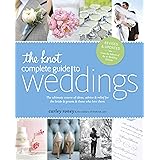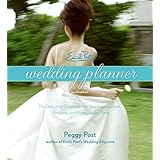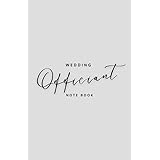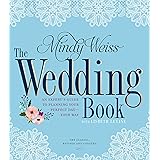Understanding the Bridal Gown Timeline: A Critical Overview
One of the most frequently underestimated aspects of wedding dress shopping is the extensive timeline required. Imagine a scenario where a bride-to-be, brimming with excitement, begins her search just a few months before her wedding, only to discover that her dream gown could take nearly a year to materialize. This disappointment is commonly encountered, underscoring the necessity of early preparation.
For a made-to-order wedding dress, which constitutes the majority of gowns purchased, a production period of approximately six to seven months is typically allocated by designers. This duration accounts for everything from pattern cutting and fabric sourcing to meticulous construction and quality checks. Subsequently, once the gown arrives at the bridal salon, an additional two to three months are generally needed for alterations to ensure a flawless fit. Consequently, a total lead time of eight to ten months before the wedding day is often advised for selecting and ordering the dress. This extended timeframe allows for potential unforeseen delays, ensures ample time for bespoke adjustments, and mitigates the need for costly rush orders.
Decoding Wedding Dress Types: Ready-to-Wear, Made-to-Order, Made-to-Measure, and Custom
The bridal industry offers a diverse range of dress procurement methods, each with distinct implications for timeline, cost, and fit. Understanding these categories is pivotal for effective wedding dress shopping.
- Ready-to-Wear: These gowns are stock pieces, pre-ordered by salons and available for immediate purchase and take-home. They are ideal for brides with expedited timelines, such as those planning elopements or shorter engagements. While convenient, the selection may be limited, and alterations will still be necessary.
- Made-to-Order: This is the most prevalent option. Upon selection, five key measurements—bust, under bust, waist, upper hip, and lower hip—are taken by a bridal stylist. These are then compared against the designer’s standardized size chart, and the closest size is ordered. The gown is then constructed based on this size, requiring subsequent alterations to achieve a perfect, personalized fit. This process typically adheres to the aforementioned six to seven-month production schedule.
- Made-to-Measure: Representing a more tailored approach, made-to-measure gowns involve a more extensive measurement process, often encompassing twenty to thirty individual data points. While the production timeline remains comparable to made-to-order, the gown is crafted much closer to the bride’s actual body proportions. This method is particularly beneficial for highly intricate designs, such as heavily beaded or laced gowns, where extensive alterations can be challenging and costly. Although fit is significantly improved, minor alterations for absolute perfection are usually still anticipated.
- Custom: The zenith of personalized bridal fashion, a custom gown entails a collaborative design process from its inception. This is distinct from minor customizations, such as adding sleeves or modifying necklines, which many designers offer to their existing styles. A truly custom dress involves working directly with a designer to create a unique garment tailored precisely to a bride’s vision. This bespoke journey typically spans a year to a year and a half, excluding final minimal alterations for body fluctuations, and represents the highest investment of time and financial resources. It is generally recommended only for brides with an exceptionally specific and unwavering design aesthetic.
Preparing for Your Bridal Fitting: Essential Attire and Expectations
The preparation for a bridal fitting extends beyond emotional readiness; practical considerations regarding attire are equally important. It is commonly recommended by bridal salons that brides attend fittings without a traditional bra. This advice stems from the architectural design of many wedding gowns, which often feature plunging necklines, intricate back detailing, or built-in corsetry that may be compromised by standard undergarments. Most bridal designers integrate provisions for cups to be sewn directly into the dress during alterations, thereby providing optimal support without visible straps or bands. However, should going braless induce discomfort, nude-colored pasties or a sticky bra can serve as suitable alternatives.
Furthermore, the choice of undergarments is paramount for an accurate visualization. Nude-colored underwear, preferably seamless, is highly advised. Vibrant or patterned undergarments can create visual distractions, hindering the ability to fully appreciate how a gown will appear on the wedding day. The objective is to create a clean canvas, allowing the dress’s silhouette, fabric, and embellishments to be the sole focus.
Navigating Your Wedding Dress Budget: Beyond the Sticker Price
For many, the world of wedding dress pricing can come as a surprise. Bridal gowns represent a significant investment, and an informed approach to budgeting is crucial. Before scheduling any appointments, prospective brides are strongly encouraged to research the price ranges of various bridal salons. Most reputable establishments will transparently list this information on their websites, or it can be readily obtained via a phone inquiry. Such due diligence prevents the disappointment of falling in love with a gown that falls outside one’s financial parameters.
When establishing a wedding dress budget, several factors warrant careful consideration:
- Does the allocated budget explicitly include the cost of alterations, which can range significantly based on the complexity of the gown and the required adjustments?
- What is the average price point of gowns at a particular salon? While a salon might advertise a starting price of $2,000, it is prudent to ascertain if this represents a substantial portion of their inventory or merely a few outlier pieces, with the majority of their collection beginning at a higher tier.
- Have provisions been made for potential additional fees, such as rush fees for expedited production or custom grading fees for size adjustments outside the standard range?
- Is the budget a firm figure, or is there a degree of flexibility should an undeniably perfect gown slightly exceed the initial allocation?
Trying on dresses that knowingly exceed one’s budget is a practice that is generally discouraged. The emotional distress associated with desiring an unattainable gown can overshadow the entire shopping experience. Prudent budgeting, therefore, encompasses not just the purchase price but all ancillary costs associated with acquiring the perfect dress.
The Reality of Sample Sizes: Envisioning Your Perfect Fit
During a bridal appointment, it is a near certainty that the sample gowns available for trying on will not perfectly match a bride’s individual size. Bridal salons typically stock one sample of each style, often in a median size, to accommodate a broad range of body types. This reality, while occasionally frustrating, is effectively managed by experienced bridal stylists.
Stylists are adept at employing various techniques—such as strategically clamping the dress to cinch it in, or utilizing extenders for a more comfortable fit—to provide a realistic illusion of how the gown will appear once ordered in the correct size and impeccably altered. It is imperative for brides to maintain open and honest communication with their stylist regarding any concerns about fit or visualization. A skilled stylist will guide the bride through the process, articulating how the gown’s proportions will adapt to her specific measurements, thereby fostering confidence in the final selection.
Anticipating Additional Fees: Beyond the Bridal Gown Price
The overall cost of a wedding dress can be influenced by several supplementary fees that are important to acknowledge during the wedding dress shopping process. Two of the most common are rush fees and custom grading fees.
- Rush Fees: Should a bride’s timeline fall short of the recommended eight to ten months for a made-to-order gown, a rush order may be necessary. This involves expediting the production and shipping process, which designers often accommodate for an additional charge. These fees can vary significantly, ranging from a few hundred to several thousand dollars, depending on the designer and the urgency required.
- Custom Grading Fees: When a bride’s measurements fall significantly outside the designer’s standard size chart, a custom grading fee may be applied. This fee covers the specialized work involved in adjusting the pattern to proportionally fit the bride’s unique dimensions, ensuring the integrity of the design is maintained. Typically, these fees are more modest, often in the range of a few hundred dollars.
Before finalizing a wedding dress purchase, it is highly advisable to proactively inquire with the bridal stylist about any potential additional fees. A comprehensive understanding of all associated costs prevents unexpected financial burdens and ensures complete transparency.
The Art of the Bridal Entourage: Curating Your Support System
The decision of who to bring to a wedding dress shopping appointment is as crucial as selecting the gown itself. While the desire to share this momentous occasion with loved ones is natural, an excessive number of opinions can quickly transform a joyful experience into an overwhelming one. A common consensus among bridal stylists, and a practical recommendation, suggests that an entourage of three guests represents an ideal balance. This typically allows for the presence of a key parental figure, the maid of honor, and a close friend, ensuring a supportive yet manageable dynamic.
Bringing too many individuals introduces a multitude of perspectives, which can inadvertently derail the appointment, shifting the focus away from the bride’s personal style and preferences. The objective of wedding dress shopping is for the bride to feel celebrated and affirmed in her choice. Therefore, selecting companions who genuinely understand and support the bride’s vision, rather than imposing their own, is paramount. For larger bridal parties, it is recommended to confirm the salon’s guest capacity in advance. Alternatively, leveraging technology, such as group chats for photo sharing, offers an effective means to include everyone without overwhelming the physical appointment space.
Maximizing Your Bridal Appointment: Quality Over Quantity
A typical bridal appointment is a carefully structured experience, designed to be both efficient and personalized. Generally, an appointment is structured to allow for approximately seven gowns to be tried on. The initial twenty to thirty minutes are usually dedicated to an intake consultation with the stylist, during which preferences, wedding themes, and personal style are discussed, enabling the stylist to curate a selection of dresses tailored to the bride’s taste. The subsequent fifteen minutes are often spent browsing and selecting these initial gowns.
This leaves a finite amount of time for trying on each dress, often only three to five minutes per gown. While this may seem brief, stylists are trained to optimize this time, offering insights and facilitating a quick yet comprehensive assessment. It is important to resist the urge to try on an excessive number of gowns. Experiencing “bridal burnout”—a state where all dresses begin to blend together, leading to decision fatigue—is a common pitfall. The emphasis should be on quality discernment rather than quantitative overload, allowing the bride to make a clear, confident choice.
Distinguishing Designer Collections from Salon Inventory
A common misconception among brides is that if a salon carries a particular designer, it will automatically stock every dress from that designer’s collection. This is rarely the case. Each bridal salon cultivates a specific aesthetic and caters to a particular “type” of bride, curating its inventory accordingly. A designer, conversely, often creates a diverse range of styles—from architectural and modern to traditional and romantic—to appeal to a broader market and various salon visions.
Consequently, a salon specializing in contemporary designs is likely to select architectural and modern gowns from a designer’s collection, while omitting more traditional pieces. Therefore, if a bride has a specific gown in mind, it is highly recommended to visit the salon’s social media pages, particularly Instagram, to gauge their overall vibe and the styles they typically feature. For absolute certainty regarding a specific dress, a proactive phone call to the salon before booking an appointment is the most reliable approach. This prevents the disappointment of arriving at an appointment only to discover that the coveted dress is not part of the salon’s curated selection.
The Final Price: Understanding Bridal Gown Pricing Structures
Contrary to dramatic portrayals often seen in popular media, the price of a wedding dress in most bridal salons is largely non-negotiable and set by the designer. Smaller, independent salons, in particular, operate on specific pricing agreements and often have minimal, if any, margin for price adjustments. The retail price reflects the designer’s costs, production, materials, and the salon’s operational expenses.
However, this does not mean that opportunities for savings are entirely absent. Brides actively seeking a more favorable price are encouraged to inquire about upcoming promotions, sample sales, or trunk shows. Trunk shows, which are special events where a designer’s full collection is brought to a salon for a limited time, often include exclusive discounts or incentives for purchases made during the event. While haggling over individual dress prices is generally not a fruitful endeavor, strategically timing one’s purchase around these promotional periods can yield genuine savings.











